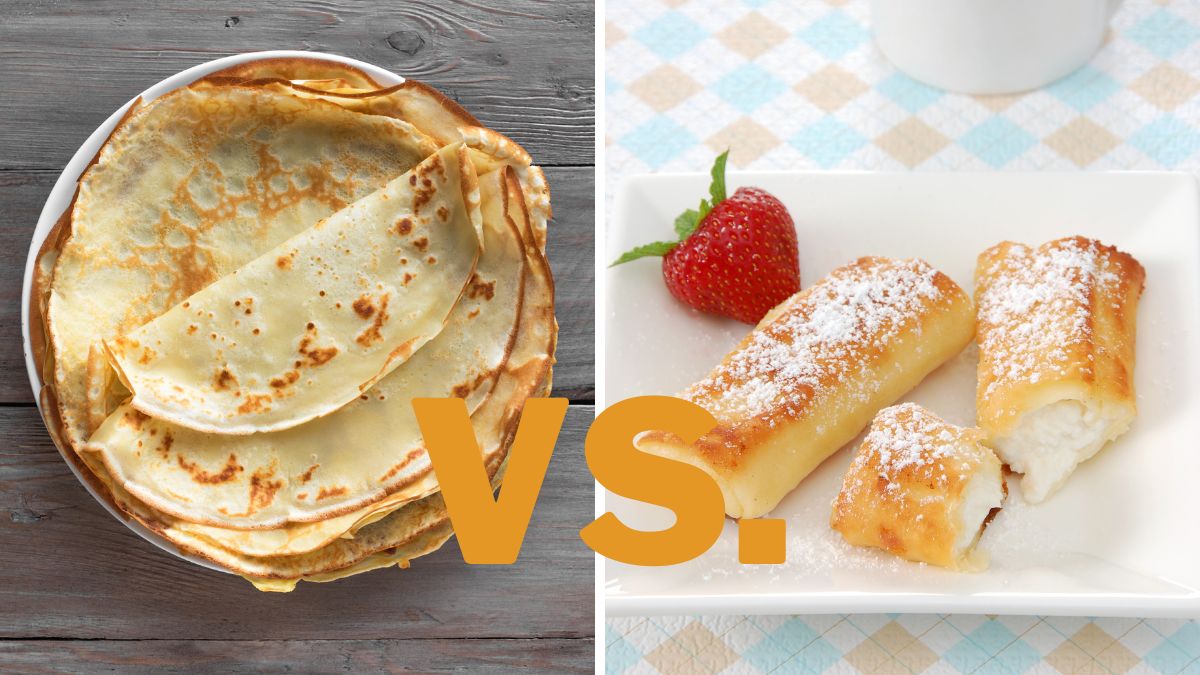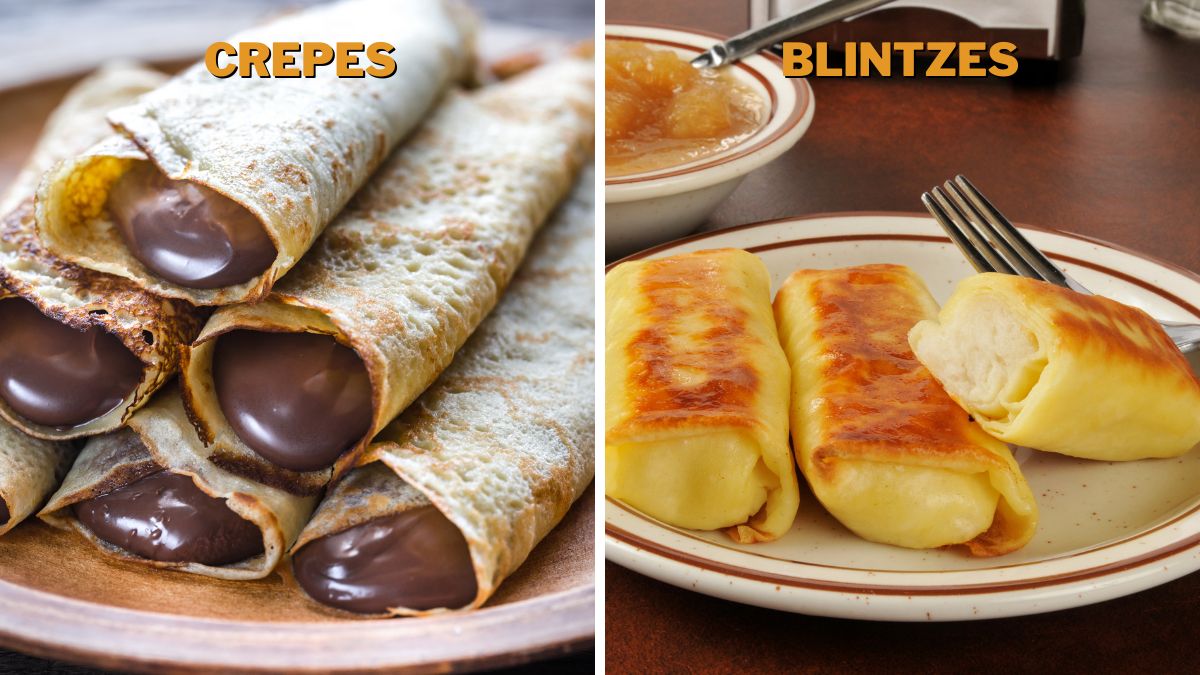Crepe vs. Blintz: Differences & Which Is Better?

Crepes and blintz are very similar desserts; both are tasty, highly versatile, fit for a number of occasions, and gentle and light as air. However, one is French, and the other one is Jewish, meaning they belong to two different cuisines. So, what are the differences between crepes and blintz?
Crepes are French, while blintzes are Jewish. Both crepes and blintzes are made of the same ingredients, but they are prepared differently. After you flip and stuff the blintzes, you fry them in butter. Crepes are done after flipping. Blintzes are stuffed with soft cheese, and crepes usually with hazelnut spread.
Since they are very similar but not the same, blintzes and crepes are served differently. However, to know which to use with which sides, you need to know the differences between them. Therefore, in the following paragraphs, I will explain the differences between blintz and crepes and how to combine them.
Crepe vs. Blintz: Differences
Here is why you cannot consider crepes and blintz as the same dessert pastry.
Origin
The origins of crepes and blintz are very different. They appear on opposite sides of Europe and for entirely different reasons. While crepes appeared around the 13th century, blintz came into existence slightly earlier than that.
Crepes are believed to have sprung to life by accident, while blintz appeared intentionally. The story about crepes says that a housewife whipped milk, flour, and eggs, rushing to make food for her husband.
Not knowing what to do, she whipped the ingredients together and baked the batter, ladle by ladle, on a pan. She used those ingredients because it was what she had at home. [1]
Blintzes, on the other hand, were made as a tribute to the life-giving sun. It is a known fact that many cultures worshipped the sun, as they mainly lived from agriculture and the sun played a vital role in the quality and quantity of their crops.
The Eastern Slavs were no exception to this sun-worshipping culture, and being that they lived in cold weather, the sun was considered to be a god. So, they decided to create the blintz as a gesture of honor to the sun, being that they made them circle-shaped, like the sun.
Preparation and Ingredients
The ingredients used for crepes and blintz are everyday ingredients you probably have in your home right now. Both are made with eggs, milk, a dash of salt, sugar, and wheat flour.
Both crepes and blintz are baked in the pan, but the main difference comes after filling. You can just spread the Nutella all over the crepes, roll them and serve. Blintz, on the other hand, is stuffed, wrapped, and then cooked in hot butter for a few minutes to get a golden color.
While talking about fillings, blintz is traditionally served with sour cream and soft cheese like ricotta. However, you can also serve them with caviar, or smoked salmon. The traditional serving of crepes is more versatile.
Crepes are traditionally served with cheese, jam, or hazelnut spread. They are also served with ground meat, hard cheeses, and smoked meat. In that case, they are usually breaded and deep-fried.

Taste and Texture
Both crepes and blintz are considered neutral-tasting as they contain no sugar or salt, even though the recipes tolerate a pinch of salt and a teaspoon of sugar. However, they are flavourful, as the milk and eggs create somewhat of a buttery dimension.
Even though they are neither sweet nor salty, crepes and blintz have recognizable tastes you cannot mistake for another dessert. They are both made with batter, not dough, and are stove pan baked, not oven-baked, though you could oven-bake them if that’s what you like.
Of the two, crepes are creamier, lighter, and airier, with a smoother and softer texture.
Also, crepes are more flexible and less prone to tearing than blintz. But if you want the softer variant, that would definitely be the crepe.
Variations
Both crepes and blintz are very variable and do excellent with modified recipes. As I mentioned before, they tolerate adding salt and sugar. Also, you can add butter, cheese, heavy cream, cocoa, mineral water, baking powder, spices, still water, and different extracts or syrups to the batter for flavor.
You can combine crepes with both sweet and savory, but blintz do better when combined with savory and meaty add-ins.
Both crepes and a blintz have vegan counterparts, as you can just add non-dairy milk and an egg substitute, and you are done.
Crepe vs. Blintz: Which Is Better?
Crepes and blintz are both delicious and so amazingly versatile. In addition, they tolerate different recipes and are incredibly simple to make. They are not demanding at all, and you can have an entire batch ready in just half an hour.
Still, crepes are the smoother of the two, while the blintzes are the rougher. If you don’t know which to make, I suggest you think about if you like the texture to be thicker and rougher or thinner and smoother.
